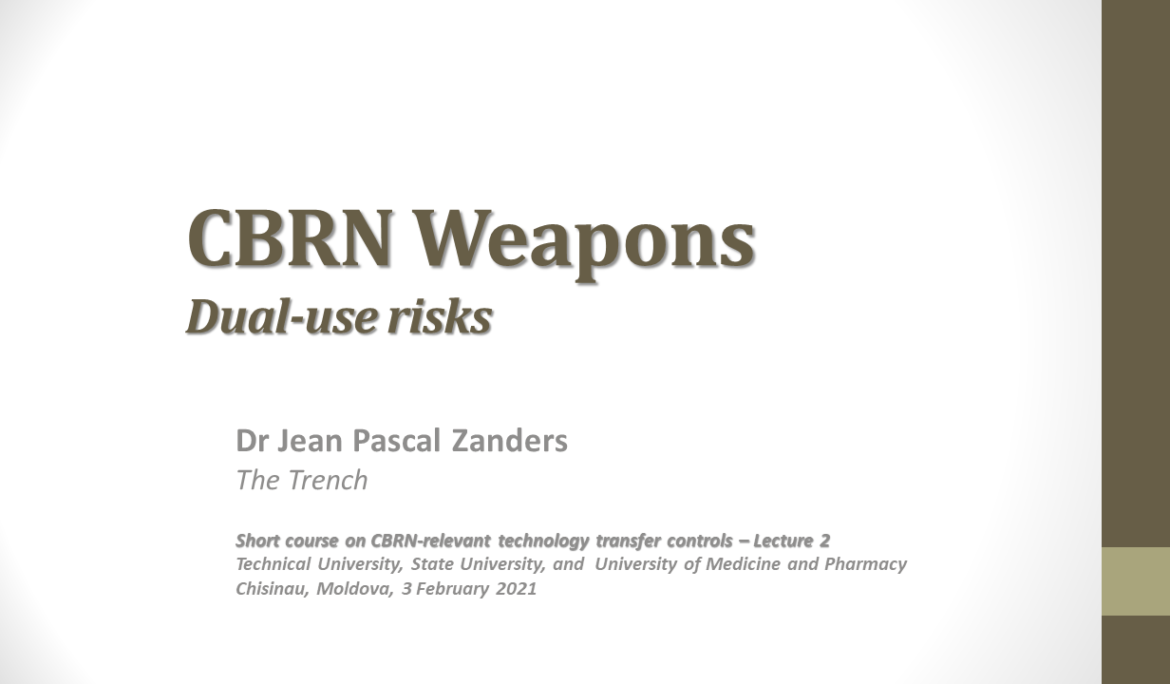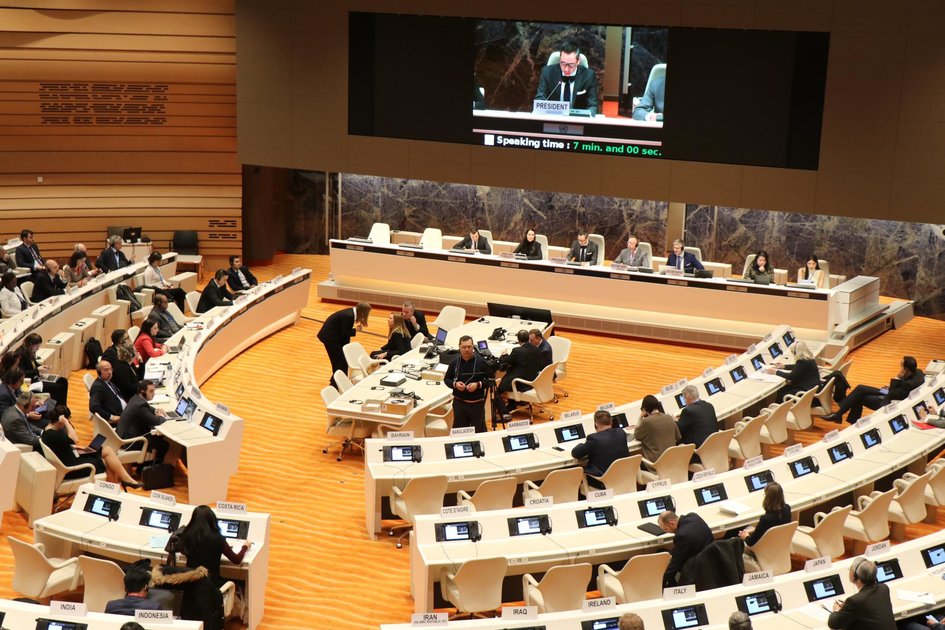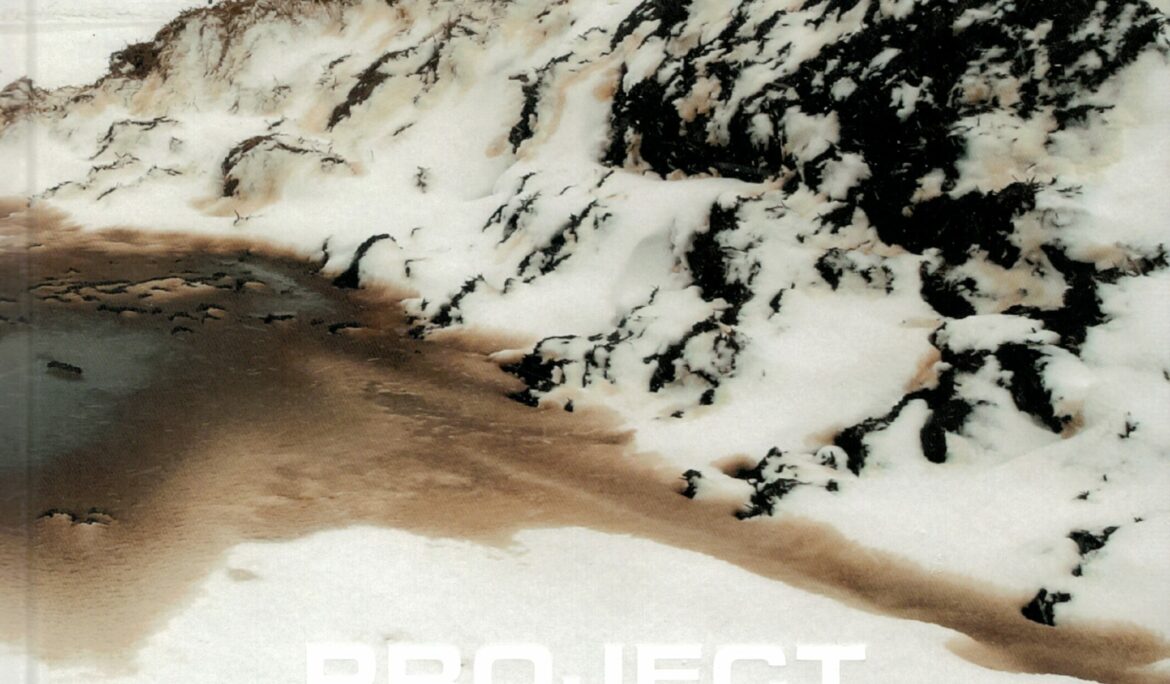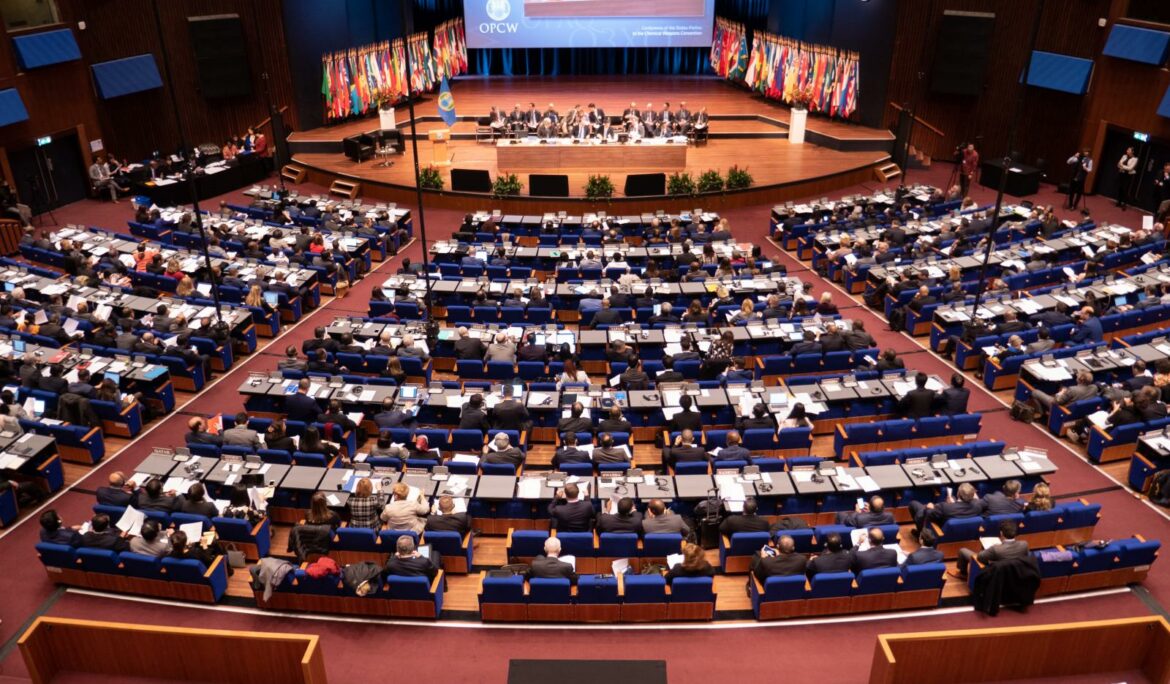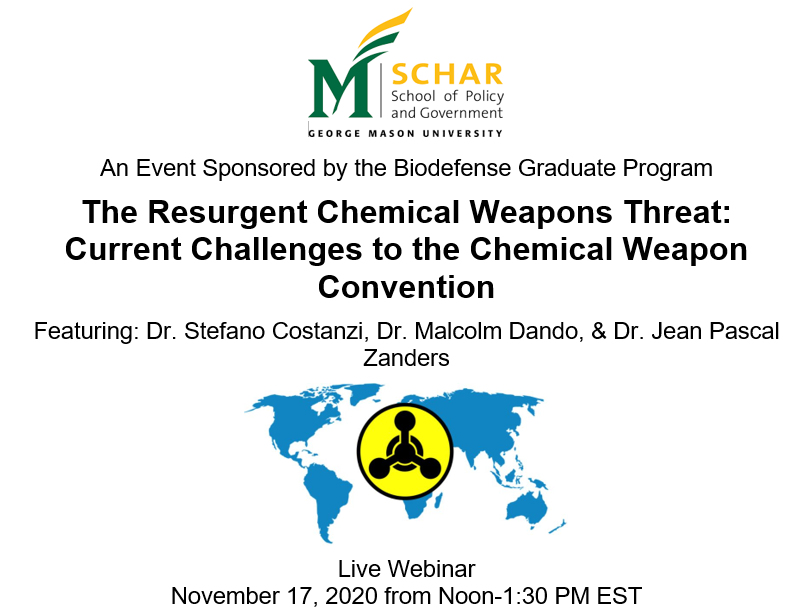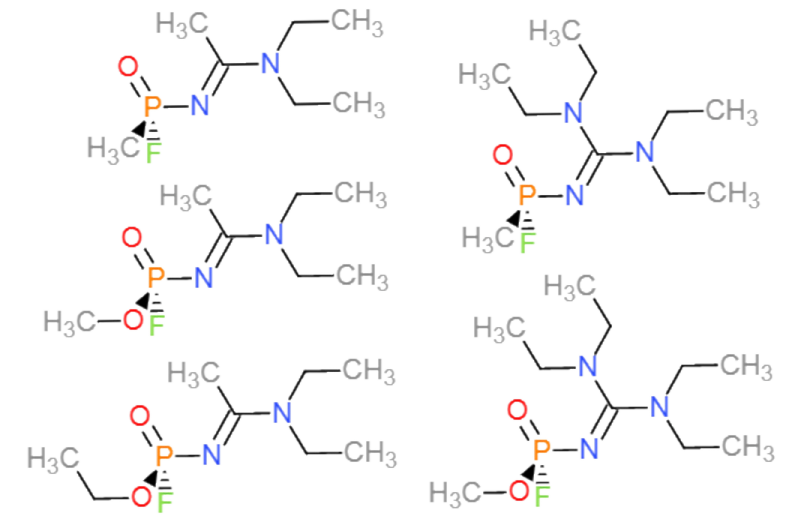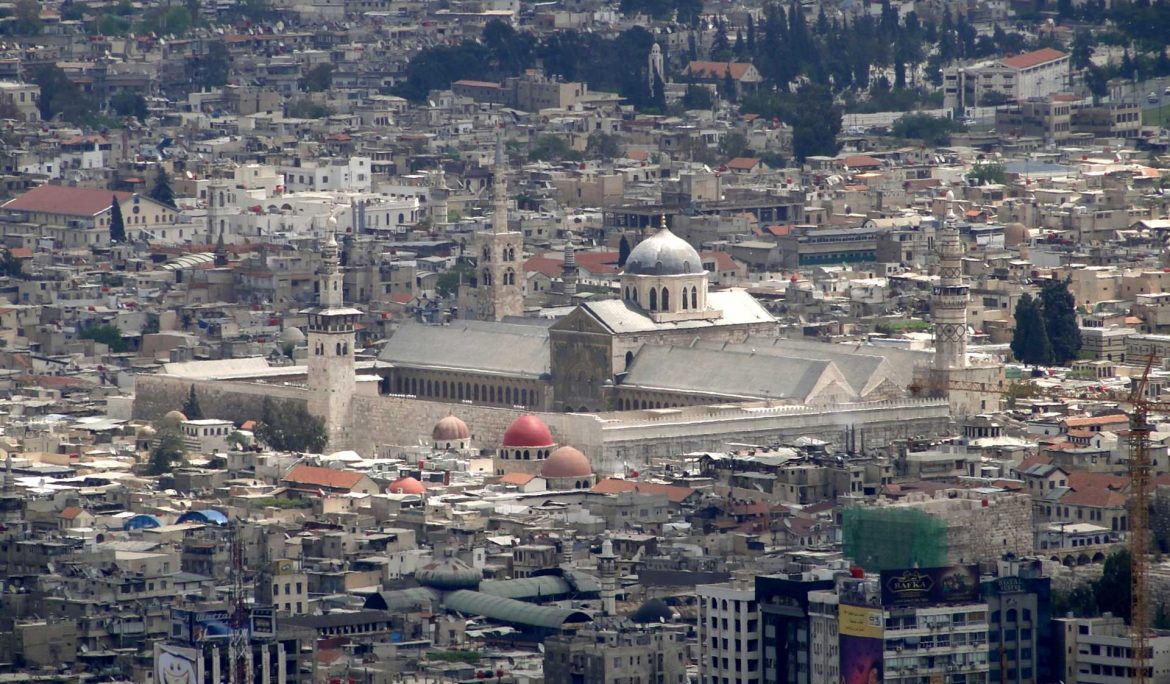Education on CBRN-relevant dual-use technology transfers in Moldova
The Science and Technology Centre in Ukraine (STCU) just published a summary of the short virtual course on CBRN-relevant dual-use technology transfers I taught in Moldova on 2 – 5 February. The course was another step in the project to design, develop and teach a full master’s course on export controls and technology governance for the GUAM countries (Georgia, Ukraine, Azerbaijan, and Moldova). As I described in a previous blog post, the educational initiative forms part of a larger Targeted Initiative funded by the European Commission that is implemented through the STCU and International Science and technology Centre (ISTC) in …
COVID-19 pushes BTWC Review Conference into 2022
As noted in the blog posting of 29 November, COVID-19 has seriously interfered with the meeting agendas for the Biological and Toxin Weapons Convention (BTWC) and the Chemical Weapons Convention (CWC). A new schedule is emerging for the BTWC while it appears possible that the second part of last year’s CWC Conference of States Parties may take place later than April. BTWC meetings for 2021 The Chairperson of the 2020 Meeting of States Parties (MSP), Ambassador Cleopa Mailu of Kenya, has notified delegations that the Meetings of Experts (MX) will now be held one year after the originally planned dates, …
The poison in beauty
Have a look at the two pictures below and try to express what you see in a few sentences. Well, the photographs are not particularly stunning or well-framed. An agricultural landscape, flat mostly with a backdrop of low hills. Not even a spectacular day, with grey clouds in the sky and signs of recent rainfall moistening the soil. Autumn, by the colour of the corn plants in one image. Carrots almost ready for harvesting in the other. In sum, absolutely unremarkable. I took the pictures on 9 October 1993 with no other ambition than to record a few facts. Striking …
Allegations of Iranian Use of Chemical Weapons in the 1980–88 Gulf War – Preface
Whether Iran launched chemical weapon (CW) attacks against Iraq during the 1980-88 Gulf War has been the subject of a long-lasting controversy. Iraq was responsible for initiating chemical warfare in the early 1980s in blatant violation of the 1925 Geneva Protocol prohibiting CW use in war (since then, more broadly termed ‘armed conflict’). Negotiations for the Chemical Weapons Convention were ongoing and would not be concluded until September 1992. Nothing in the Geneva Protocol prevented Iran from developing, producing and stockpiling CW. Little stood in its way to retaliate in kind. The Gulf War also took place in the final …
COVID-19 interferes with CWC and BTWC meeting schedules
COVID-19 is messing up the diplomatic disarmament and arms control agendas. On 27 March Ambassador Gustavo Zlauvinen from Argentina announced as President-Designate the postponement of the 10th Review Conference of the Nuclear Non-Proliferation Treaty (NPT). Initially scheduled for 27 April – 22 May 2020, it was to take place by April 2021. The deadline was moved up to August. However, because of the United Nation’s original schedule of meetings for 2021 combined with the many rescheduled meetings of this year, the only possible opening in the agenda was an impractical slot from 4 to 29 January. The pandemic’s resurgence in …
Webinar / Séminaire en ligne : Les armes chimiques et biologique : Une menace actuelle ?
It is webinar season! Les Interviews d’IDN La menace des armes chimiques et biologiques Jeudi 26 novembre à 18h30, IDN recevra Jean-Pascal Zanders, Chercheur et expert sur les armes chimiques et biologiques Sur le thème “Les armes chimiques et biologiques : Une menace actuelle ?” S’inscrire: https://cutt.ly/chigVcH 0 Links …
Have you already registered for the CW threat webinar? (10 days to go)
The Resurgent Chemical Weapons Threat: Current Challenges to the Chemical Weapon Convention Assassination attempts with novichok The race for new incapacitating chemical agents CW disarmament in Syria and investigations of alleged CW use More than 190 people have already registered. They come from many countries, including Argentina, Belgium, Brazil, Canada, Germany, Iran, Iraq, Sweden, Switzerland, UK, and the USA. They work for government agencies, international organisations, private companies and contractors, think tanks, and universities. If you still wish to join the webinar: register at https://bit.ly/34vDJRQ —– The chemical weapons nonproliferation regime is at a crossroads. Chemical weapons have …
Resurgent Chemical Weapons Threat (Webinar)
The Resurgent Chemical Weapons Threat: Current Challenges to the Chemical Weapon Convention The chemical weapons nonproliferation regime is at a crossroads. Chemical weapons have made a comeback with deadly nerve agents being used by Russia, Syria, and North Korea against perceived “enemies of the state.” A new generation of chemical weapons that incapacitate, instead of kill, their victims are also under development. At their next annual meeting, members of the 1993 Chemical Weapons Convention (CWC), which bans the development, production, and use of chemical weapons, will confront this resurgence in the chemical weapons threat. Please join a distinguished panel …
History of nerve agent assassinations
On 20 August, the Russian anti-corruption activist Alexei Navalny fell ill during a return flight to Moscow and was hospitalised in the Siberian town of Omsk after an emergency landing. Members of his travelling party immediately suspected poisoning, an impression hospital staff reinforced when they refused Navalny’s personal physician access to his medical records. Following his airlifting to Berlin for further examination and specialist treatment, the Charité hospital issued a statement on 24 August that preliminary findings indicated exposure to ‘a substance from the group of cholinesterase inhibitors’. Even though the hospital could then not name the specific poison used, …
Apparently major chemical weapons attack near Damascus reported
As I am writing, disturbing news reports are coming in of a major chemical attack on the eastern eastern outskirts of Damascus (Ghouta district). According to images and film footage posted to the Internet by opponents to the al-Assad regime, many casualties, including fatalities can be seen. Supplementary visual testimony strongly indicates poisoning. [Images are graphic and should be viewed with caution!] In past blog postings and commentaries I have been sceptical of CW claims, because the narrative accompanying images and film footage did not correspond with what could be seen. More importantly, a number of things one would expect …

